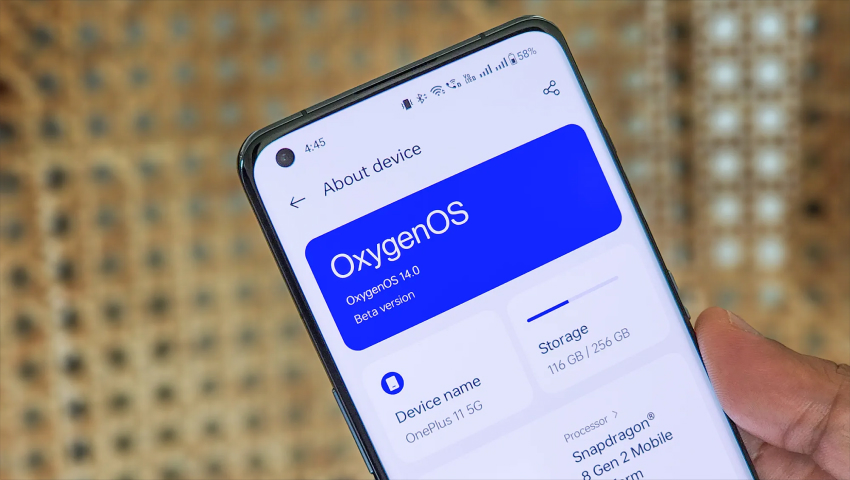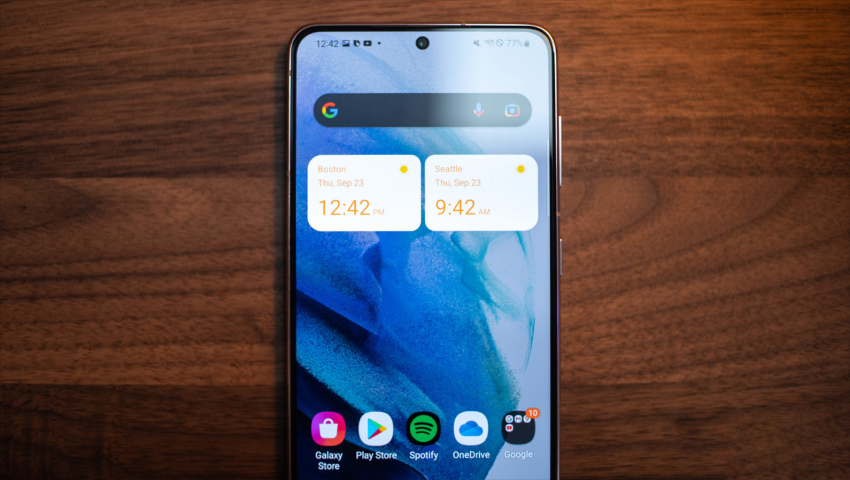Choosing the best operating system in the ever-changing world of Android may be likened to choose between many ice cream flavors, each of which offers a distinctive combination of flavor and texture. In this field, Oxygen OS Vs One UI are giants, representing different approaches to user interface functionality and design.
Whichever of the two appeals to you—the vivid diversity of One UI or the elegant simplicity of Oxygen OS—is best depends on your own tastes and needs. Let’s take a comparison tour to help you sort through the subtleties and choose the ideal stock Android skin experience for your online adventures.
What is Oxygen OS?
Oxygen OS, an stock Android skin operating system variant developed by OnePlus, is renowned for emphasizing speed, simplicity, and customization. With a few small adjustments to optimize performance and user satisfaction, it offers a nearly-stocked Android skin experience. Reactivity and fluidity are highly valued in Oxygen OS, which is well-known for its straightforward interface and minimalist design, in order to give users a seamless and easy-to-use navigation experience.

By providing features that meet a range of user needs, such as Reading Mode, Gaming Mode, and Zen Mode, OnePlus Oxygen OS improves productivity and attention span. Because of its frequent software updates and vibrant community, Oxygen OS is a highly recommended choice for enthusiasts of Android.
What is One UI?
Samsung Electronics One UI is a bespoke stock Android user interface that makes its smartphones and tablets easy to use. In 2018, Samsung One UI organized material and controls for easier access, especially on bigger displays.

Beautiful colors, smooth animations, and straightforward movements make it ideal for one-handed use. One UI of Samsung lets users customize their smartphone with themes, icon packs, and font styles. Samsung One UI meets varied user demands with Multi-Window mode and Edge Screen, improving productivity and multitasking.
Detailed Comparison Between Oxygen OS vs One UI
Features and Functionality:
OnePlus Oxygen OS
- Prioritizes performance, ensuring smooth animations and gestures for a fluid user experience.
- Includes specialized modes like Reading Mode, Gaming Mode, and Zen Mode, catering to various user needs for enhanced productivity and focus.
- Offers a minimalist interface with essential apps and features, reducing clutter and promoting simplicity in navigation.
Samsung One UI
- Multi-Window mode, one of the specially designed features for Samsung smartphones, makes multitasking easy and lets users run many programs at once.
- Coherent communication across devices is made possible by integration with Samsung services like Bixby and Samsung DeX, which improves the ecosystem experience overall.
- Users may customize their smartphone to their liking with a wide range of customization options, such as navigation gestures and dark mode, guaranteeing a personalized experience.
Software Updates and Support:
OnePlus Oxygen OS
- Renowned for its prompt delivery of software updates and security patches, particularly notable on OnePlus Oxygen OS devices.
- Benefits from its close-to-stock Android skin experience, enabling quicker updates and smoother rollout processes compared to heavily customized interfaces.
- Ensures users stay up-to-date with the latest features and security enhancements, contributing to a reliable and secure user experience.
Samsung One UI
- Backed by Samsung’s extensive infrastructure, ensuring strong support for software updates and customer assistance.
- Receives regular updates for both flagship and mid-range devices, although the timing may vary depending on factors such as device model and regional policies.
- Samsung’s commitment to providing timely updates reflects its dedication to enhancing user experience and addressing security vulnerabilities promptly.
Device Compatibility and Ecosystem:
OnePlus Oxygen OS
- Mainly found on OnePlus devices, ensuring a consistent user experience across the product range.
- Although available through custom ROMs and ports on select devices, official support and optimizations may be lacking outside of OnePlus devices.
- Offers a streamlined experience tailored to OnePlus hardware, focusing on performance and usability.
Samsung One UI
- Strong integration with Samsung’s ecosystem of hardware and software, ensured by its exclusive design for Samsung smartphones and tablets.
- Offers a unified ecosystem experience that makes it possible to connect to other Samsung products—like TVs, smartwatches, and household appliances—with ease.
- Assures consumers gain from the synergies across Samsung products, increasing productivity and ease of use within the Samsung ecosystem.
Which is Better?
Determining which is better between OnePlus Oxygen OS Vs One UI of Samsung ultimately depends on individual preferences, needs, and priorities.
What should you prefer Oxygen OS Vs One UI?
Oxygen OS may be preferable if you
you prefer OnePlus Oxygen OS smartphones for a clean and minimalist interface reminiscent of stock Android skin.
- Prioritize smooth performance and fluid animations.
- Appreciate dedicated features like Reading Mode, Gaming Mode, and Zen Mode for enhanced productivity and focus.
- Value a clutter-free experience with essential apps and features.
One UI may be the better choice if you
- Own a Samsung device and seek features tailored specifically for it, such as Multi-Window mode and Edge Screen.
- Enjoy seamless integration with Samsung services like Bixby and Samsung DeX, enhancing the overall ecosystem experience.
- Desire extensive customization options for system-wide settings, including dark mode and navigation gestures.
- best thing you prefer Samsung one UI smartphones for a visually appealing interface with vibrant colors and intuitive design elements.
Ultimately, the “better” operating system depends on your personal preferences, device compatibility, and how you prioritize features and functionality.
Differences between Oxygen OS Vs One UI:
User Interface:
- Oxygen OS: Focuses on a near-stock Android skin experience with minimalistic design and emphasis on simplicity and speed.
- One UI: Features a visually rich interface with bold colors and intuitive design elements, optimized for one-handed usability and larger screens.
Device Compatibility and Ecosystem:
- Oxygen OS: Primarily available on OnePlus devices, offering consistency across the product lineup, with limited availability on other devices through custom ROMs.
- One UI: Exclusive to Samsung smartphones and tablets, ensuring deep integration with Samsung’s ecosystem, including seamless connectivity with other Samsung devices.
Customization Options:
- Oxygen OS: Offers themes and a launcher that can be customized for each device.
- One UI: Offers advanced customization options, including themes, icon packs, and font styles.
Features and Functionality:
- Oxygen OS: With elements like Gaming Mode and Zen Mode, Oxygen OS prioritizes performance.
- One UI: Designed especially for Samsung devices, including Multi-Window mode and Samsung DeX and Bixby integration.
Software Updates and Support:
- Oxygen OS: Known for timely software updates and security patches, especially on OnePlus devices, with a close-to-stock Android skin experience facilitating faster updates.
- One UI: Supported by Samsung’s infrastructure for software updates and customer support, receiving regular updates for flagship and mid-range devices, though timing may vary.
Conclusion
The decision between Oxygen OS Vs One UI in the changing world of Android ultimately comes down to personal tastes, device compatibility, and priorities. Oxygen OS is a great choice for consumers who want simplicity and speed because of its basic, clear UI and performance-focused approach.
On the other hand, Samsung One UI appeals to those who value personalization and ecosystem connection by providing a visually stunning experience that is jam-packed with features designed specifically for Samsung devices. Whichever of the two operating systems—Oxygen OS’s clean efficiency or One UI’s colorful versatility—you choose, they both provide engaging user experiences that guarantee every android user finds their ideal fit.


